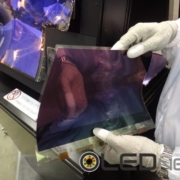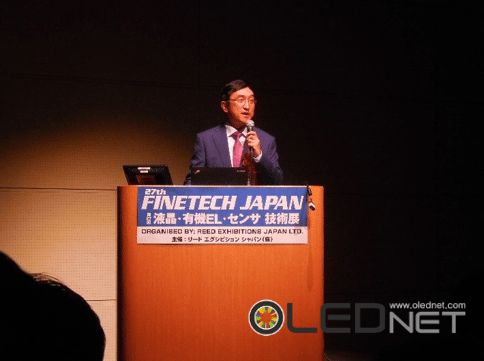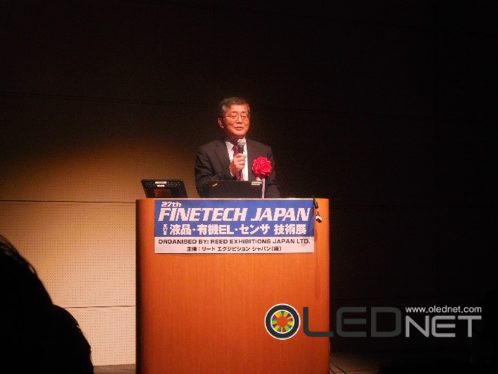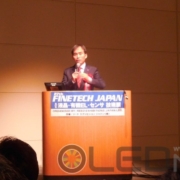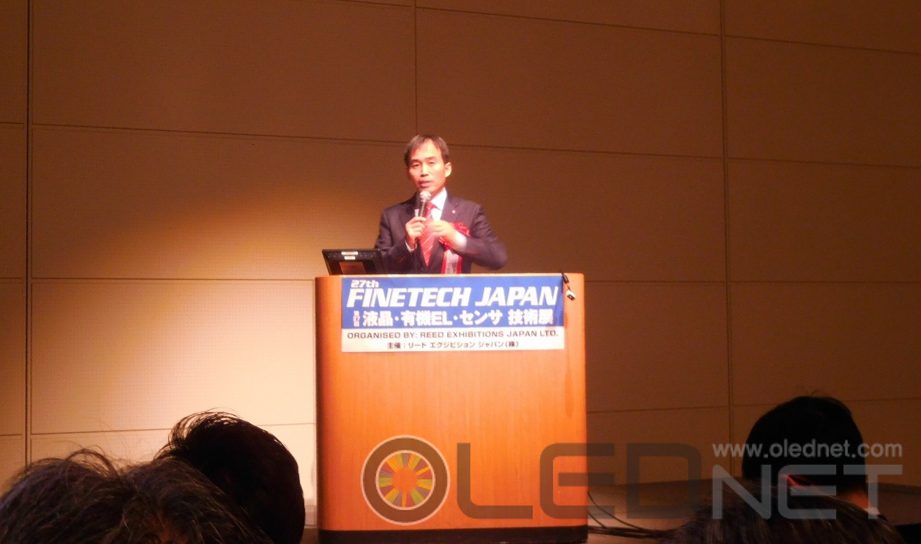[Finetech Japan 2017] SEL, 81inch 8K OLED Multi display unveiled
SEL unveiled the 81inch 8K OLED multidisplay at Finetech JAPAN 2017 held in Tokyo, Japan from April 5th to 7th. The SEL 81inch 8K OLED multidisplay is implemented with 36 (6×6) panels of 13.5 inch wide display.
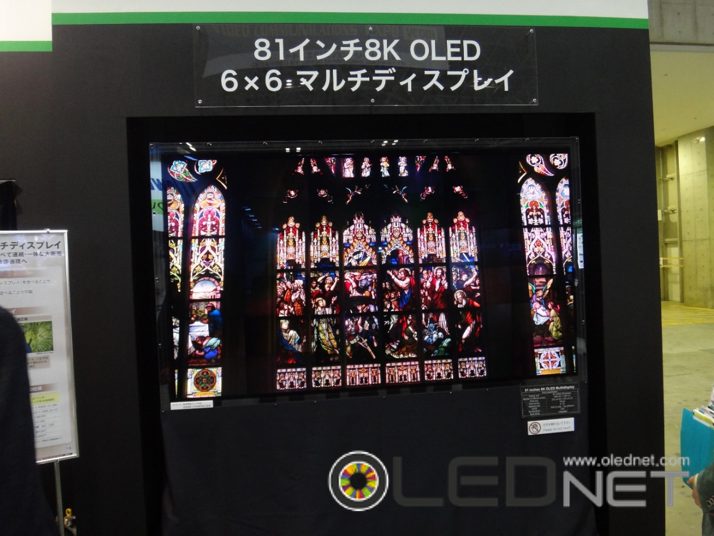
<SEL’s 81inch 8K OLED multidisplay>
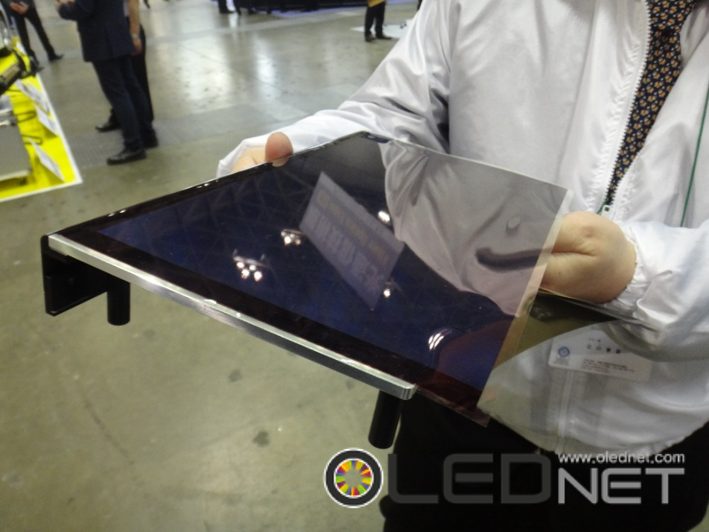
<13.5inch-wide display panel applied to SEL’s 81inch 8K OLED multidisplay>
A SEL manager said, “When multiple displays are attached to one another, it is hard to look a single layer screen due to difference between layers and brightness of the joint parts.”
“For resolving the problem and implementing the seamless image, transparent treatment around the edge and deep learning technology are applied to the 81inch 8K OLED multi display. Deep learning technology compensates for grayscale curves by comparing the brightness of joint parts and partial images excluding the joint parts. ” Additionally SEL unveiled a curved OLED multidisplay that is transparent around edges equal to the 81inch 8K OLED multidisplay.
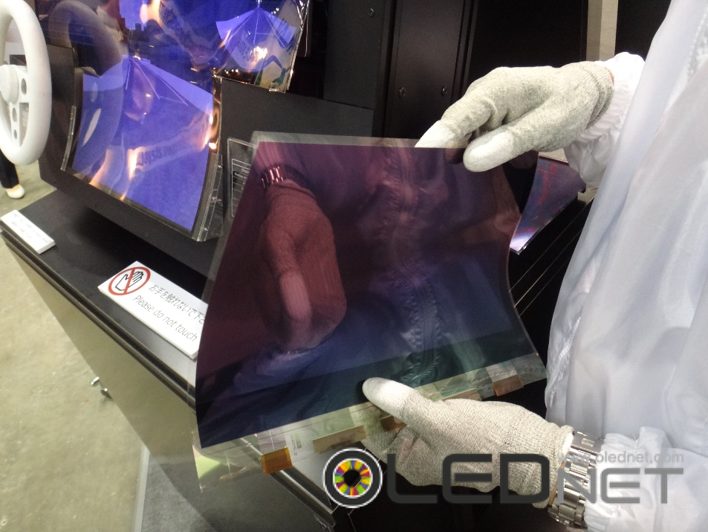
<SEL’s 13inch curved OLED panel>
“A curved OLED panel is as thin as 100 μm, so it has excellent resistance to bending (inward and outward bending) even at 100,000 bends in the curvature radius of the 5R.” The curved OLED multidisplay design can offer a variety of applications to use displays such as car-mounted and digital signage. “said the SEL manager.
In this Finetech Japan 2017, SEL presented curved OLED multidisplay in the form of car-mounted (CID + cluster). The car-mounted display has three –layer 13.5-inch panels and HD (720 x 1028) resolution.
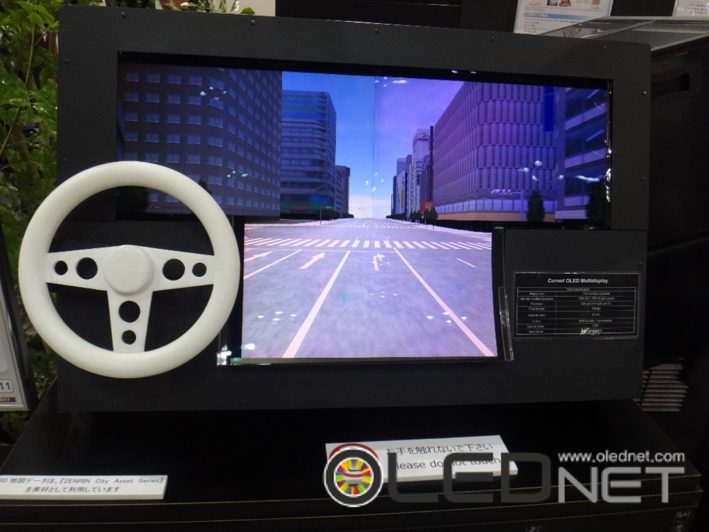
<Car-mounted display>
SEL also showed full-spec 8K OLED display and hybrid display with improved visibility to gain positive response from the audience.

